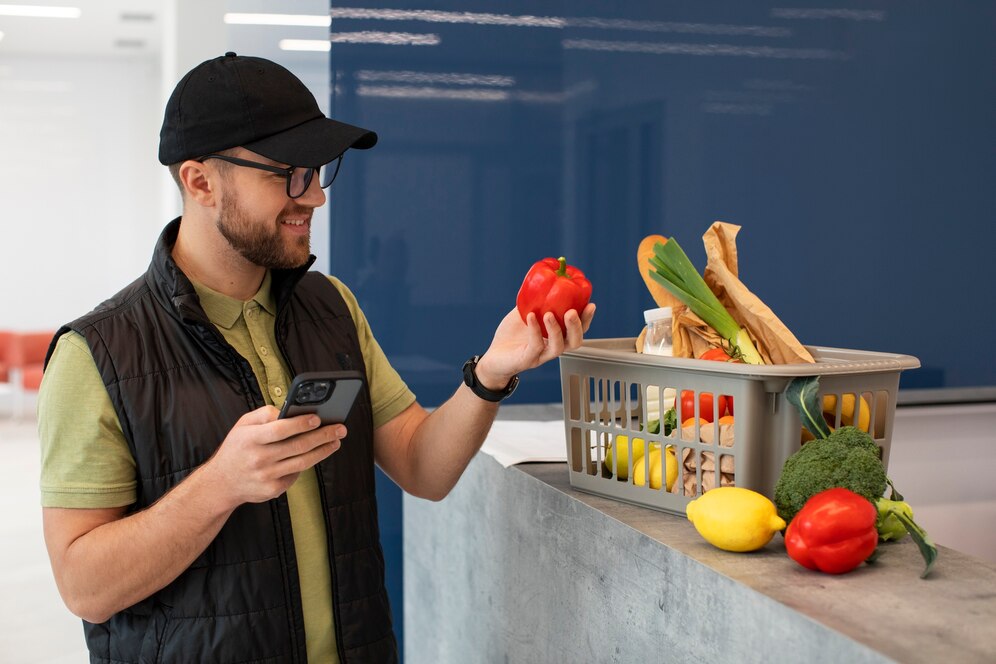Understanding Food Safety Management
Food safety management is a critical aspect of any food-related business, whether it be a restaurant, catering service, or food manufacturing plant. The primary goal of food safety management is to ensure that food is safe for consumption, thereby protecting consumers from foodborne illnesses and ensuring compliance with regulatory standards.
In recent years, the adoption of technology in food safety management has become increasingly prevalent. Food safety manager software has emerged as a valuable tool for businesses looking to streamline their processes and enhance their compliance efforts. However, the question remains: is this software the right fit for your business?
What is Food Safety Manager Software?
Food safety manager software is designed to assist businesses in managing their food safety protocols effectively. This software typically includes features such as temperature monitoring, hazard analysis, documentation management, and reporting tools. By automating these processes, businesses can reduce human error, save time, and ensure that they meet all necessary compliance requirements.
Moreover, many software solutions offer mobile capabilities, allowing staff to access important information and record data on-the-go. This flexibility can significantly enhance the efficiency of food safety management practices. For instance, staff can quickly log temperature readings or report potential hazards directly from their mobile devices, ensuring that critical information is captured in real time and reducing the likelihood of oversight. Want to get more about food safety management tools visit https://www.sahealth.sa.gov.au/wps/wcm/connect/public+content/sa+health+internet/public+health/food+safety+for+businesses/food+safety+management/food+safety+management+tools+standard+3+2+2a.
Benefits of Implementing Food Safety Manager Software
Implementing food safety manager software can yield numerous benefits for a business. One of the most significant advantages is enhanced compliance. With constantly changing regulations, keeping up with food safety laws can be challenging. Software can help ensure that all necessary documentation is in place and up to date, reducing the risk of non-compliance.
Additionally, the software can improve overall operational efficiency. By automating routine tasks, staff can focus on more critical areas of the business, such as customer service and quality control. This not only boosts productivity but also contributes to a safer food environment. Furthermore, the data collected through these systems can provide valuable insights into operational trends and potential areas for improvement. For example, analytics can reveal patterns in temperature fluctuations that may indicate equipment issues, allowing businesses to proactively address problems before they escalate.
Moreover, the integration of food safety manager software can foster a culture of accountability within the organisation. When staff members are equipped with the tools to monitor and report food safety practices, they are more likely to take ownership of their roles in maintaining high standards. This can lead to a more engaged workforce, where employees feel empowered to contribute to the overall safety and quality of the food being served or produced.
Assessing Your Business Needs
Before investing in food safety manager software, it is essential to assess your business’s specific needs. Different businesses have different requirements, and understanding these can help determine whether such software is a worthwhile investment.
Consider the size of your operation, the complexity of your food safety processes, and the level of compliance required in your industry. For smaller businesses with simpler operations, a basic software solution may suffice. In contrast, larger operations may require more comprehensive features to manage their food safety protocols effectively. Additionally, the type of food products you handle can significantly influence your software needs. For instance, businesses dealing with perishable goods may require more robust tracking and monitoring capabilities to ensure compliance with health regulations.
Evaluating Current Processes
Take a close look at your current food safety management processes. Are they manual and time-consuming? Do you struggle with documentation and compliance? If so, it may be time to consider a software solution. Identifying pain points in your current system can help clarify the specific features you need from a software package.
Moreover, consulting with your team can provide valuable insights. Employees who are on the front lines of food safety management can offer perspectives on what tools would make their jobs easier and more efficient. Engaging with your staff not only fosters a sense of inclusion but also ensures that the chosen software aligns with the practical realities of daily operations. Furthermore, consider conducting a workflow analysis to pinpoint inefficiencies and areas where technology could streamline processes, ultimately leading to a more effective food safety management system.

Budget Considerations
Budget is another crucial factor to consider when deciding on food safety manager software. While investing in software can lead to long-term savings and improved efficiency, it is essential to ensure that the costs align with your business’s financial capabilities.
Examine the total cost of ownership, including initial purchase costs, ongoing subscription fees, and any additional expenses for training and support. Comparing different software options can help identify a solution that fits within your budget while still meeting your needs. It may also be beneficial to explore financing options or potential grants that could alleviate some of the upfront costs. Additionally, consider the potential return on investment (ROI) that effective food safety management software could bring, such as reduced waste, fewer compliance issues, and enhanced customer trust, which can ultimately lead to increased sales and profitability.
Key Features to Look For
When evaluating food safety manager software, certain features can significantly enhance its effectiveness. Understanding what to look for can help ensure that the software you choose aligns with your business’s requirements.
Compliance Management
One of the primary functions of food safety manager software is to assist with compliance management. Look for software that includes features for tracking regulatory requirements, managing documentation, and generating compliance reports. This can help simplify the process of meeting food safety standards and reduce the risk of penalties.
Real-Time Monitoring
Real-time monitoring capabilities are another essential feature. Software that allows for continuous monitoring of critical control points, such as temperature and humidity, can help identify potential issues before they escalate. This proactive approach to food safety can significantly reduce the risk of foodborne illnesses.
User-Friendly Interface
A user-friendly interface is vital for ensuring that all staff members can navigate the software easily. Complicated systems can lead to frustration and errors, undermining the very purpose of implementing the software. Opt for solutions that offer intuitive designs and comprehensive training resources to facilitate smooth adoption. Click here to get what sets leading food safety software companies apart in 2025.
Making the Transition
Transitioning to food safety manager software can be a significant change for any business. However, with proper planning and execution, this transition can be smooth and beneficial.
Begin by developing a clear implementation plan that outlines the steps needed to integrate the software into your existing processes. This plan should include timelines, responsibilities, and training requirements. Engaging staff early in the process can also foster a sense of ownership and ease the transition.
Training and Support
Providing adequate training for staff is crucial to the successful adoption of food safety manager software. Ensure that all team members understand how to use the software effectively and are aware of its benefits. Many software providers offer training sessions and ongoing support to assist with this process.
Additionally, consider designating a point person within your team who can serve as a resource for questions and troubleshooting. This can help streamline communication and ensure that everyone is on the same page.

Monitoring Progress
Once the software is implemented, it is essential to monitor its effectiveness regularly. Collect feedback from staff and assess whether the software is meeting the intended goals. This ongoing evaluation can help identify areas for improvement and ensure that the software continues to serve the needs of the business.
Conclusion: Is It Right for You?
Ultimately, the decision to invest in food safety manager software comes down to your business’s specific needs and circumstances. By carefully assessing your current processes, evaluating your budget, and considering the key features of various software options, you can make an informed decision.
For businesses that prioritise food safety and compliance, investing in food safety manager software can be a game-changer. It can streamline operations, enhance compliance, and ultimately contribute to a safer food environment for consumers. Whether you are a small café or a large food manufacturing facility, the right software can support your food safety management efforts and help your business thrive.




